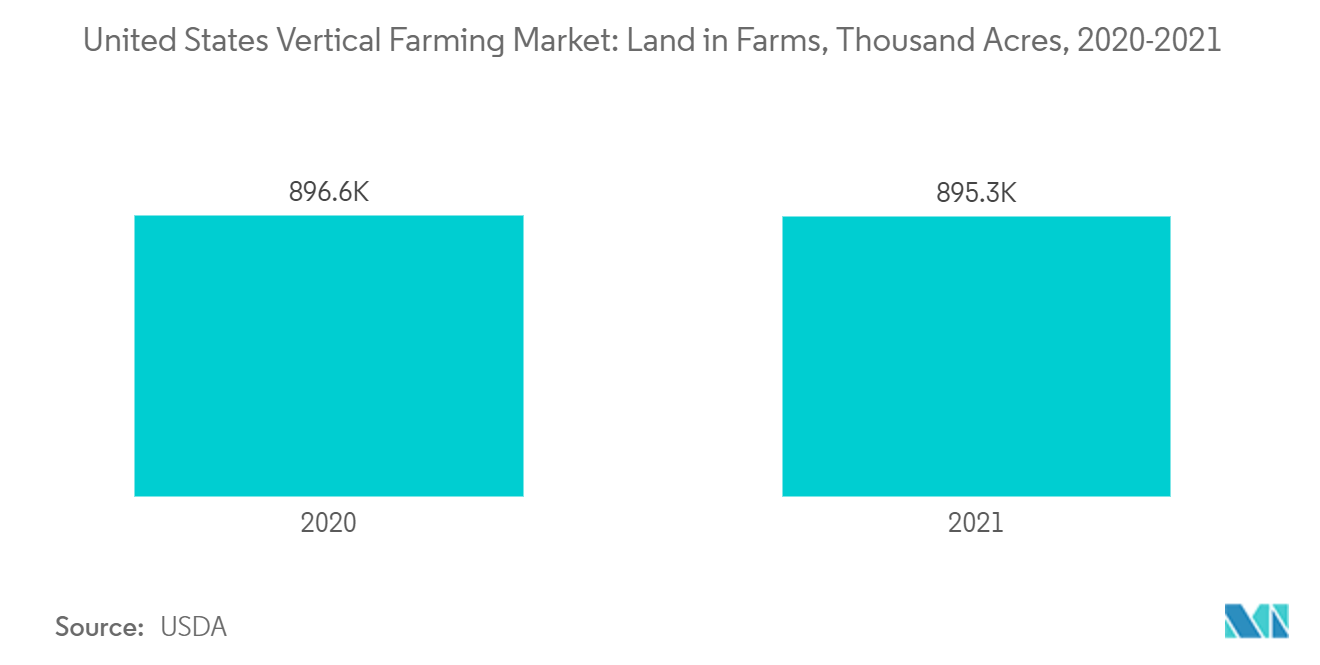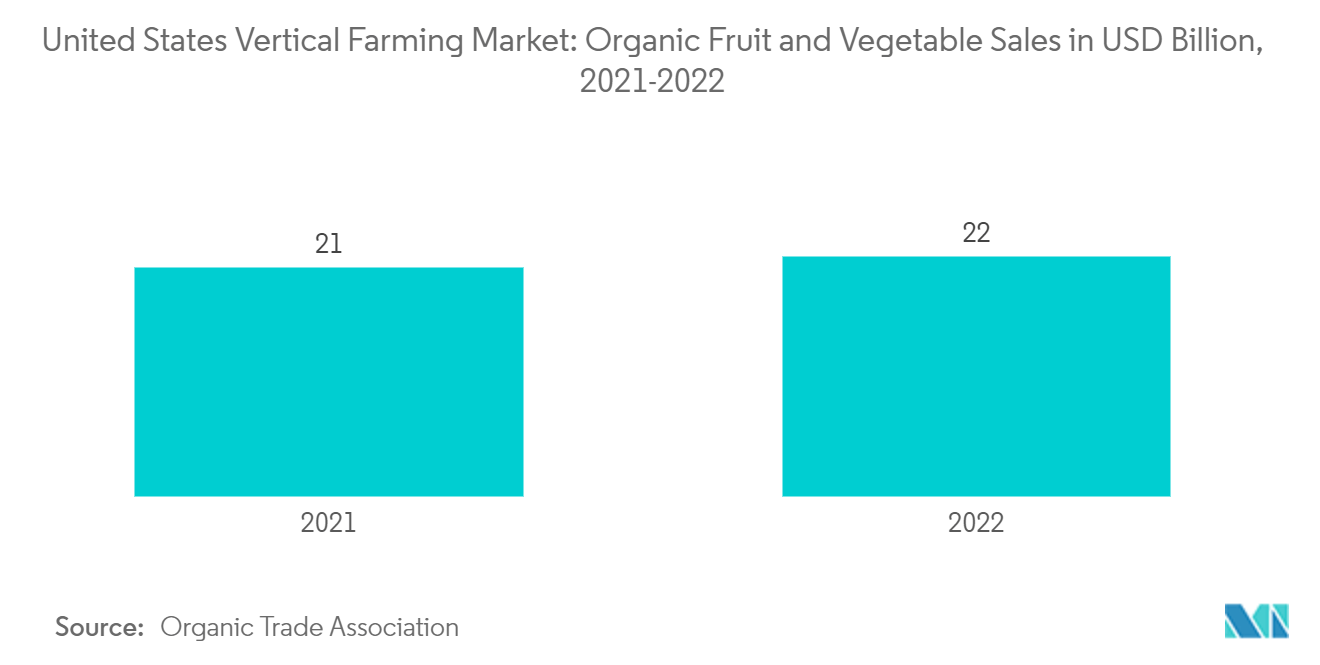Market Trends of US Vertical Farming Industry
The Hydroponics Segment Dominates the Market
About 77% of the available water in the United States is used for agriculture. Water availability in most of the central and northern regions of the country is scarce. Adding to these issues, the regions classified as water-stressed are also where the economy has developed more extensively compared to the rest of the country. This is due to the proximity of these areas to the United States. This has also resulted in the stagnation of agricultural areas.
Subsequently, the number of farms and farmlands in the United States has gradually decreased for a decade, with an estimated decline of 2% of farms and farmland every decade. For instance, as per the USDA (United States Department of Agriculture), the number of farms in the United States in 2021 was 2,012,050, down 2,019,000 farms from 2020. Similarly, total land in farms, at 895.3 thousand acres, decreased by 896.6 thousand acres from 2020.
Therefore, the demand for mechanisms like hydroponics has increased in recent years. Hydroponics has a very high potential to combat the issues faced by the current agriculture methods in the United States. The prevalence of using less water and opting for sustainable methods for growing food is being implemented all over the country. This is also highly preferred by consumers and the government. As a result, the US hydroponics farming market is anticipated to flourish during the forecast period.
In addition, hydroponics farming plants are grown in a nutrient medium, which reduces 90% of water use in agriculture. It has gained huge popularity in the country. According to the United States Geological Survey report, agriculture is a major user of ground and surface water in the United States. Irrigation accounted for more than 40% of the nation’s total freshwater withdrawals. The low usage of water in crop production in the hydroponics system drives the growth of the segment in the country. According to official reports, the country has more than 2000 hydroponics farming units. The United States is witnessing expansions in hydroponics farming. For instance, in 2022, an Ohio-based hydroponic farming company, 80 Acres Farms, began constructing a USD 120 million facility in suburban Atlanta.

Growing Demand for Organic Fruits and Vegetables
The demand for organic fruits and vegetables has constantly been growing at a higher rate in the United States due to the increased purchasing power of consumers. For instance, according to the Organic Trade Association, the sales of organic fresh fruit and vegetables in the United States in 2022 totaled USD 22 billion, from USD 21 billion in 2021. The cost of these organic products is high. Yet, many organic fruits and vegetables are being imported into the United States. This has opened the higher potential for vertical farming, with systems that support the growth of various fruits and vegetables that are being imported. This technique accelerates the production of exotic fruits and vegetables and meets the escalating demand in the domestic market.
Furthermore, using vertical farming, farmers can grow certain high-return-on-investment crops, including most house plants, flowering plants, and organic fruits and vegetables, regardless of environmental conditions. Farming through vertical farming systems, such as hydroponics, is less time-consuming and can be done near the customers while providing salad crops and vegetables at low prices with low transportation costs. This factor enhances the need for hydroponics systems and leads to an increment in their production.
In addition to vegetables, the year-round availability of strawberries is being made possible through integrated agricultural production systems. According to the US Department of Agriculture, in 2022, around 1.39 million tons of strawberries were produced in the United States, which increased from 1.34 million tons in 2021. To keep up with the market demand, many farmers in the country have started growing strawberries through hydroponics. In addition, on average, vertical farms produce 5.45 pounds of lettuce per square foot. Based on the factors mentioned above, vertical farming is anticipated to play a critical role in producing fruits and vegetables in the country.


